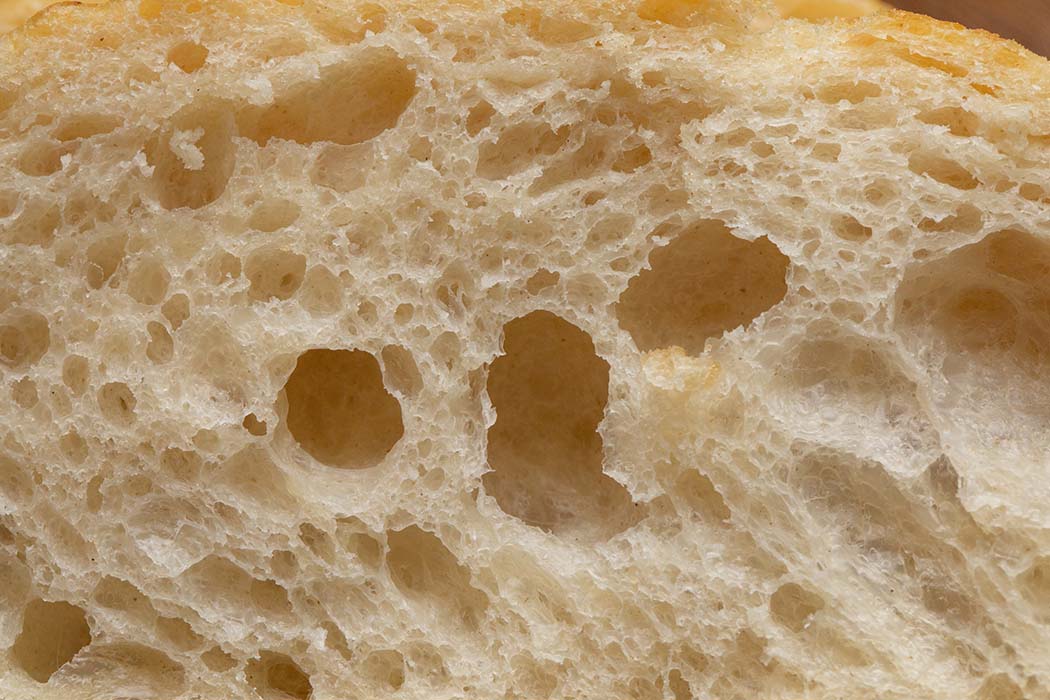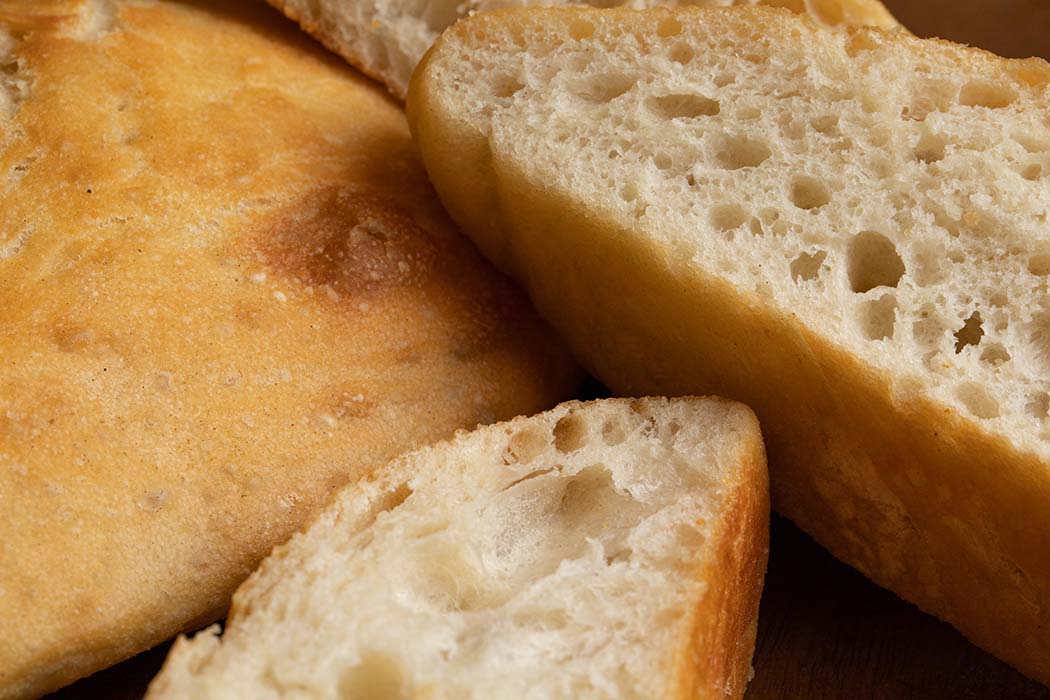400 g Italian type 00 organic flour
100 g Manitoba organic flour
15 g fresh brewer’s yeast
270 g warm water
15 g salt
10 g sugar
8 tbsp extra virgin olive oil
water, olive oil and salt to brush
To make pan focaccia (focaccia bread) put the two organic flours and the fresh yeast in the bowl of a stand mixer. Dissolve the salt in water, start the mixer at the lowest setting using the dough hook and drizzle the water slowly until the dough comes away from the sides of the bowl and is compact, smooth, firm, semi-glossy and elastic. Continue to mix while you add the sugar and little by little drizzle in the extra virgin olive oil. Turn out the dough onto a oiled work surface and work with your hands to form a ball, cover with an upturned bowl and leave to rest for 15-20 minutes.
Then, fold the dough to make it smooth and elastic: lightly squash the dough, then take the top and bottom edges and bring them to the centre, and then do the same with the left and right edges, so that they overlap. Turn the dough keeping the folds towards the bottom and leave to rest for another 15-20 minutes, covered with the upturned bowl. Then repeat the folds and form a ball, place the dough ball in an oiled bowl and cover with cling film, and leave to rise for at least two hours. When the dough is ready, turn it out on a lightly oiled work surface, press it lightly without deflating it completely and roll it quite tightly to form a baguette loaf shape; bring the edges to the centre ad turn keeping the folds underneath.
Transfer the loaf to a baking sheet lined with baking paper, brush the surface with extra virgin olive oil and leave to rise for an hour in a turned-off oven.
When the dough has risen, press with your fingers to make dents or simples on the surface, wait another half an hour, then bake in a pre-heated conventional oven at 200°C for about 30 minutes placing a bowl with water at the bottom of the oven.
Once the pan focaccia is golden and baked, remove from the oven, leave to cool on a rack and enjoy!


